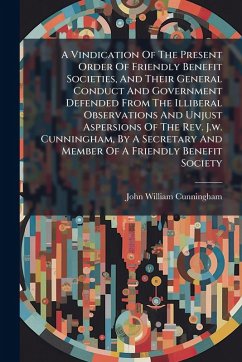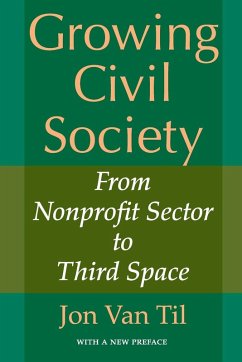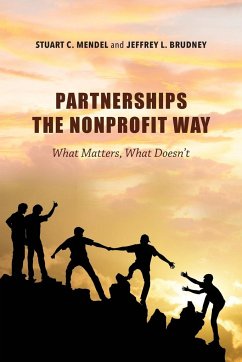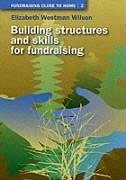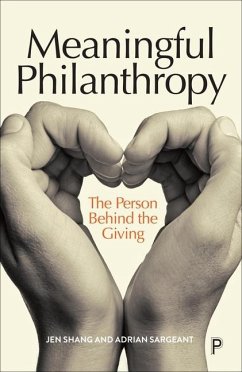
The Origin And Objects Of The Systematic Beneficence Society

PAYBACK Punkte
7 °P sammeln!
Explore the foundational principles and aims of the Systematic Beneficence Society in this insightful paper, originally presented at a conversazione in Belfast under the chairmanship of the Lord Bishop of Down & Connor & Dromore. "The Origin And Objects Of The Systematic Beneficence Society" delves into the structured approach to charitable giving and social welfare that the society championed. This historical document provides valuable context for understanding the evolution of philanthropic organizations and their impact on communities. Discover the motivations and strategies behind systemat...
Explore the foundational principles and aims of the Systematic Beneficence Society in this insightful paper, originally presented at a conversazione in Belfast under the chairmanship of the Lord Bishop of Down & Connor & Dromore. "The Origin And Objects Of The Systematic Beneficence Society" delves into the structured approach to charitable giving and social welfare that the society championed. This historical document provides valuable context for understanding the evolution of philanthropic organizations and their impact on communities. Discover the motivations and strategies behind systematic beneficence and its role in addressing social needs. This paper offers a unique glimpse into the historical development of organized charity and its enduring relevance in contemporary society. This work has been selected by scholars as being culturally important, and is part of the knowledge base of civilization as we know it. This work was reproduced from the original artifact, and remains as true to the original work as possible. Therefore, you will see the original copyright references, library stamps (as most of these works have been housed in our most important libraries around the world), and other notations in the work. This work is in the public domain in the United States of America, and possibly other nations. Within the United States, you may freely copy and distribute this work, as no entity (individual or corporate) has a copyright on the body of the work. As a reproduction of a historical artifact, this work may contain missing or blurred pages, poor pictures, errant marks, etc. Scholars believe, and we concur, that this work is important enough to be preserved, reproduced, and made generally available to the public. We appreciate your support of the preservation process, and thank you for being an important part of keeping this knowledge alive and relevant.



